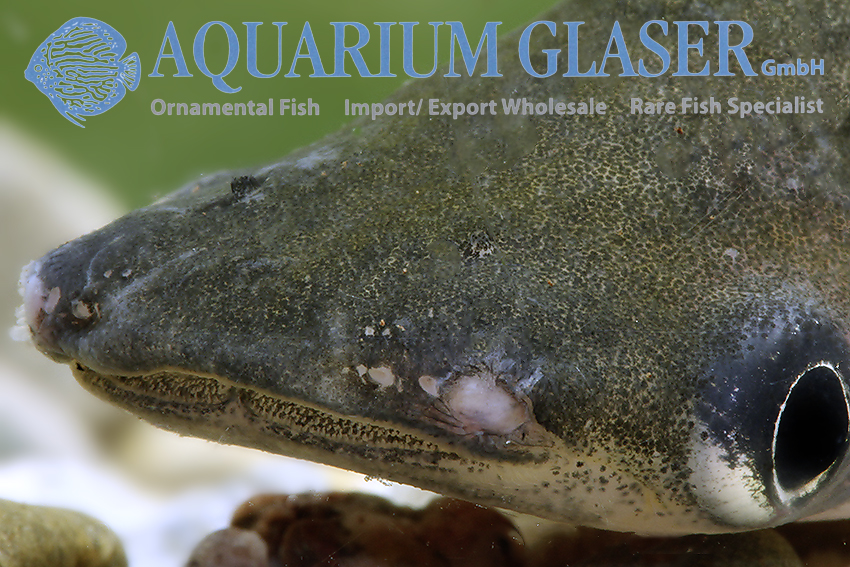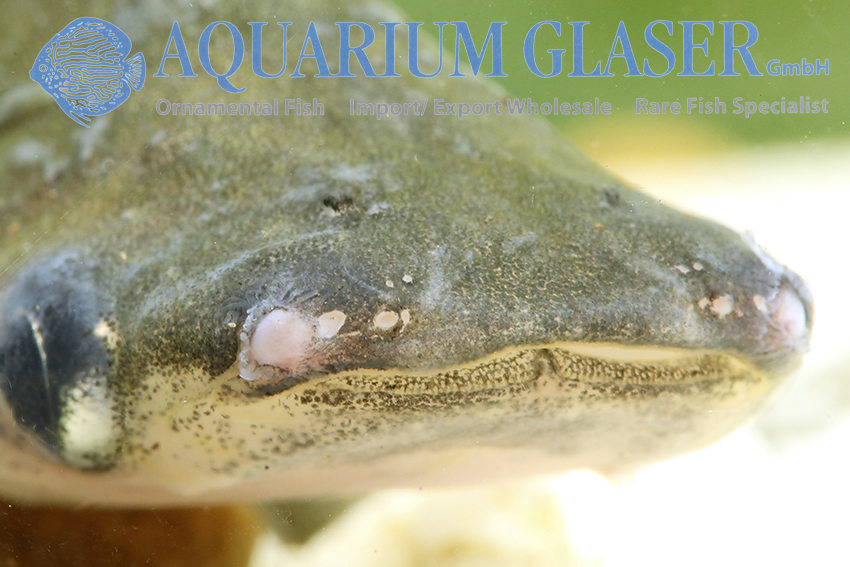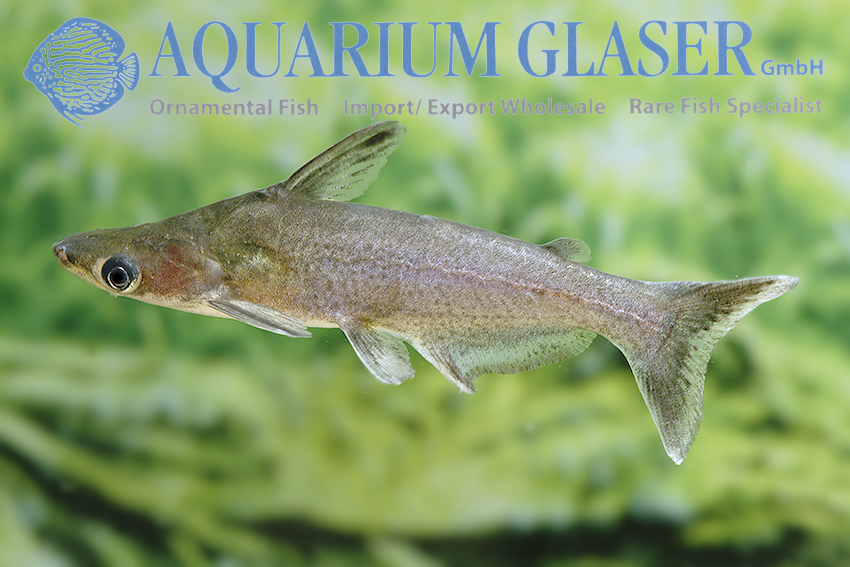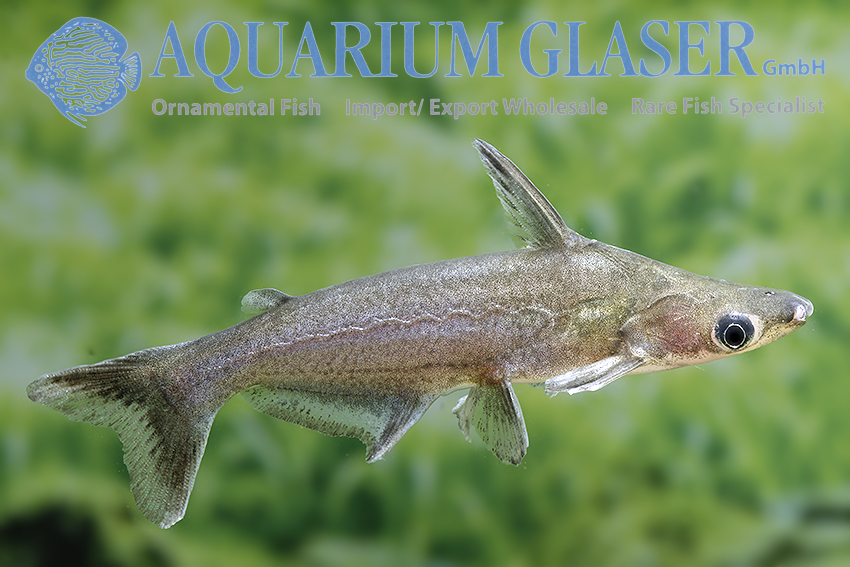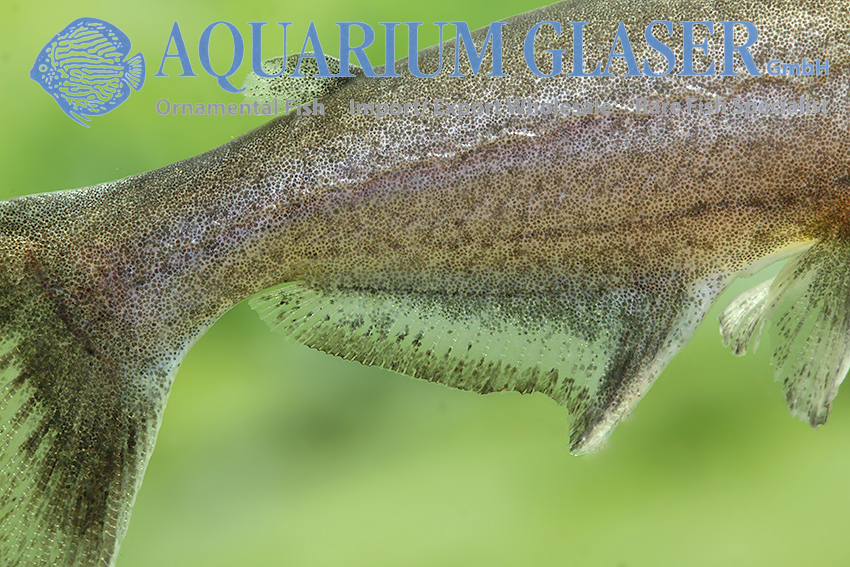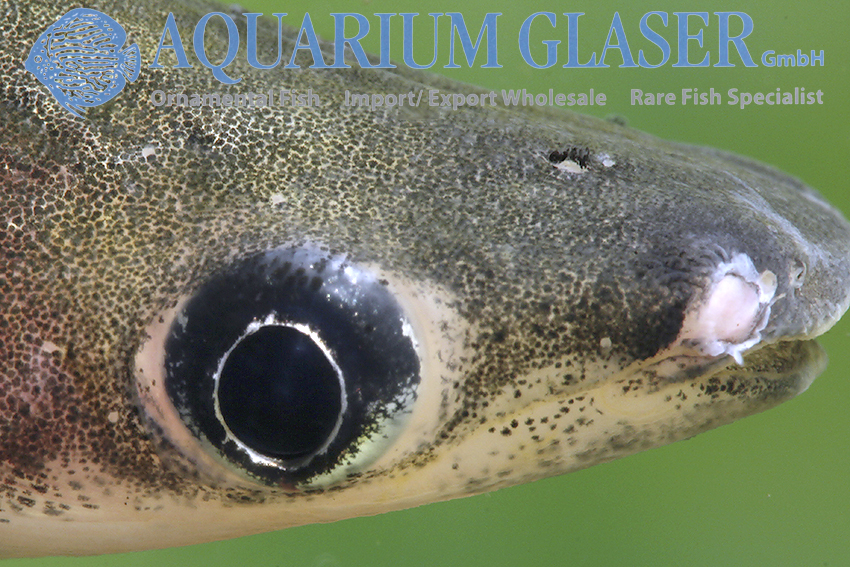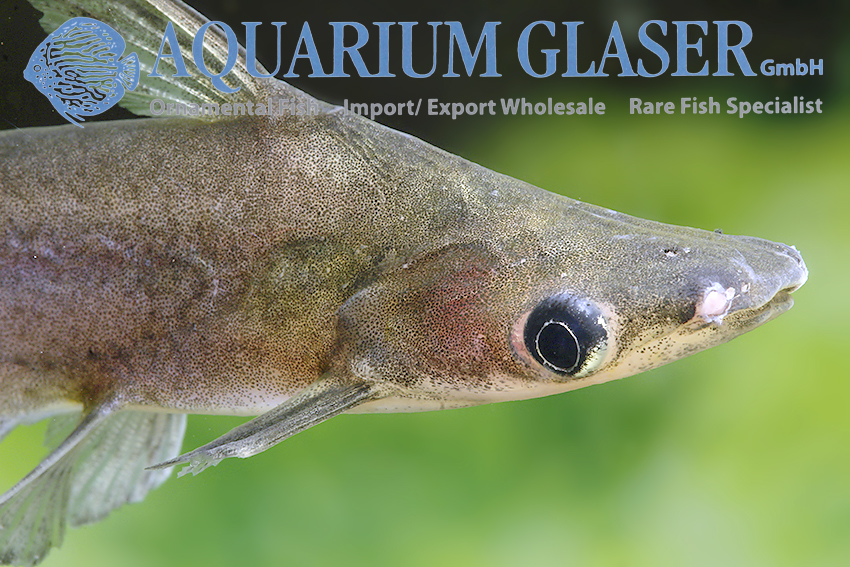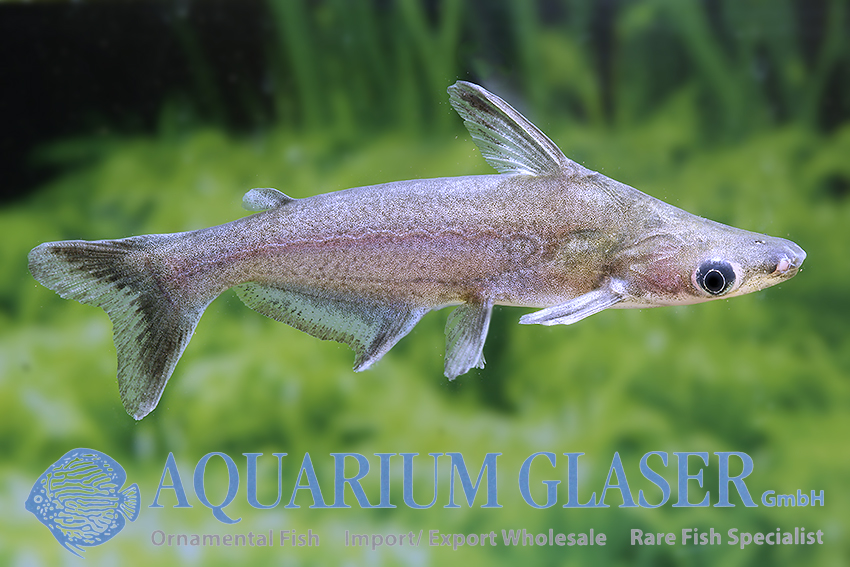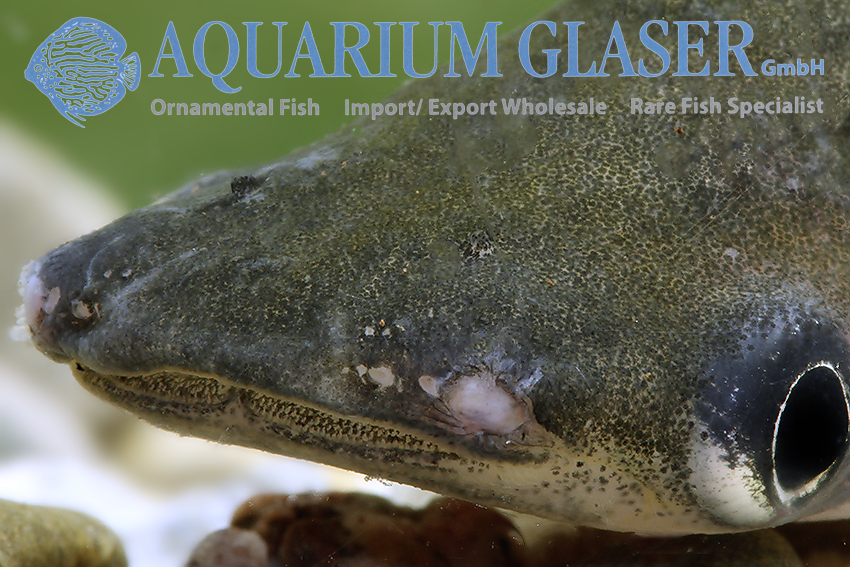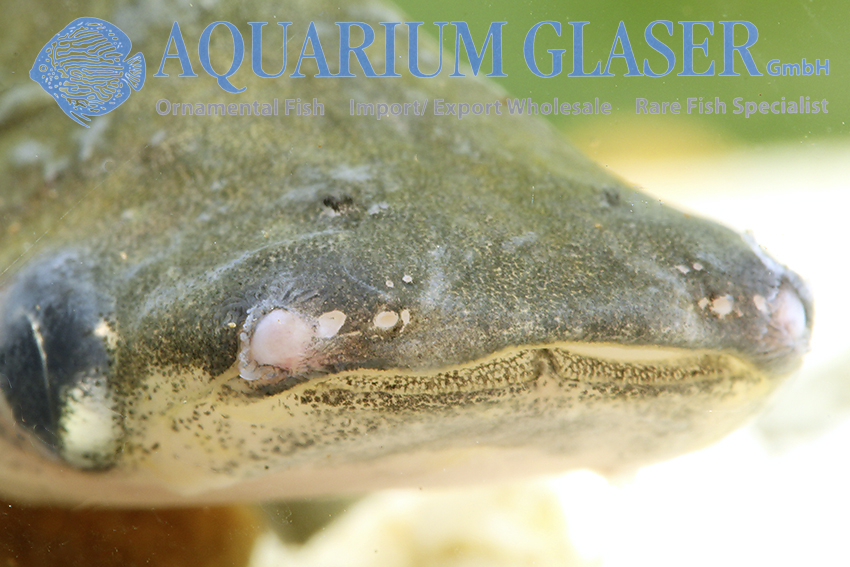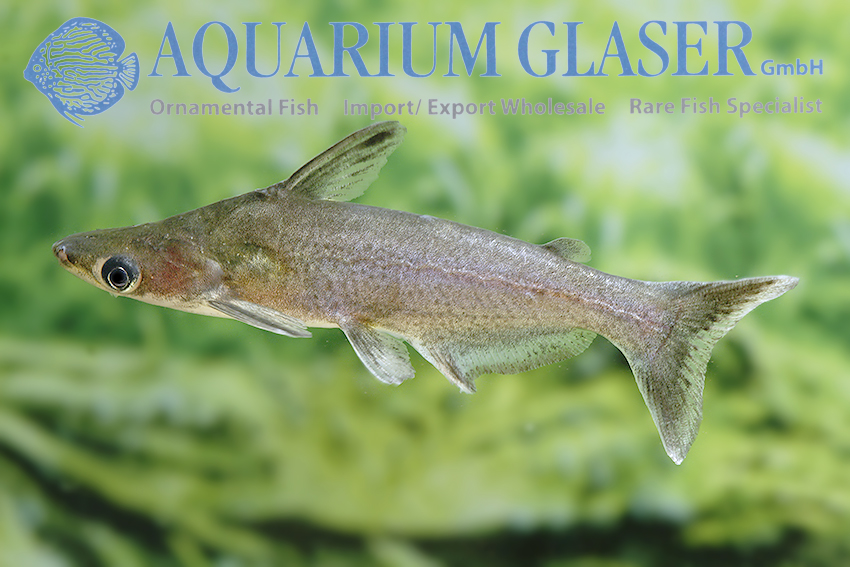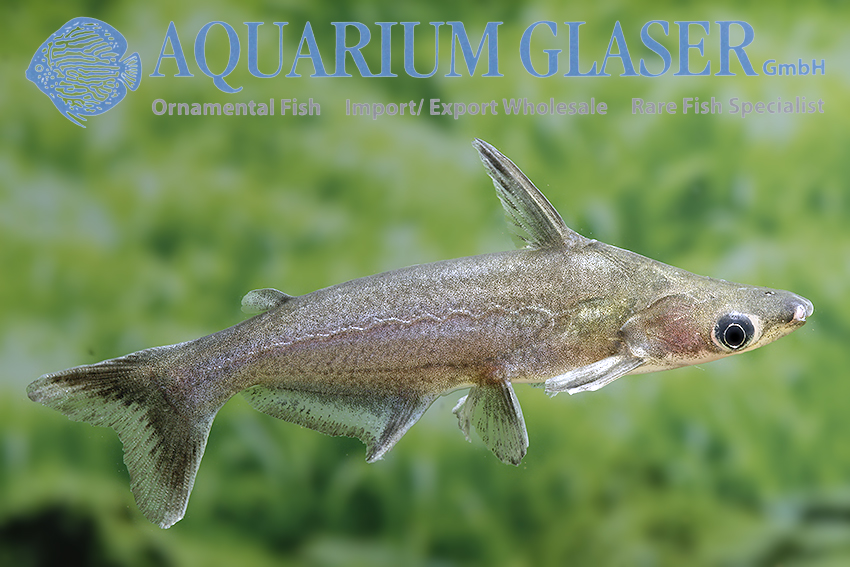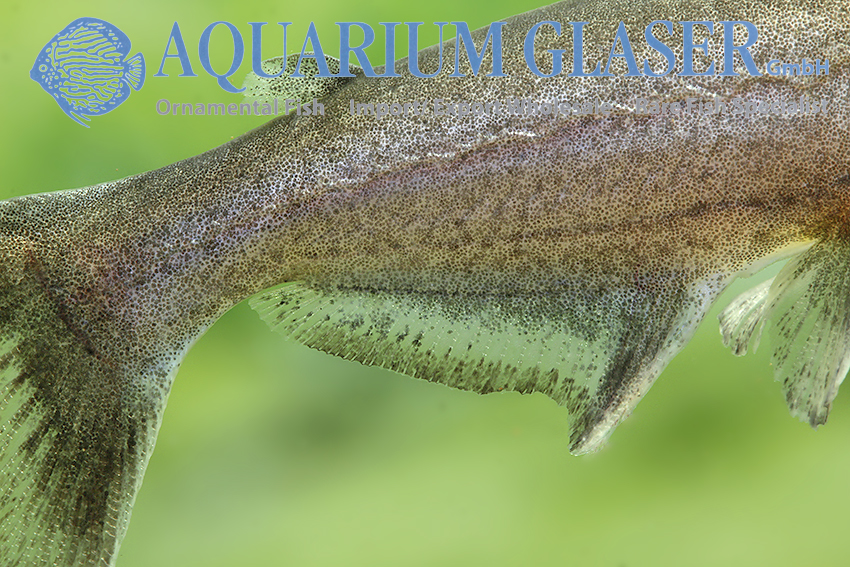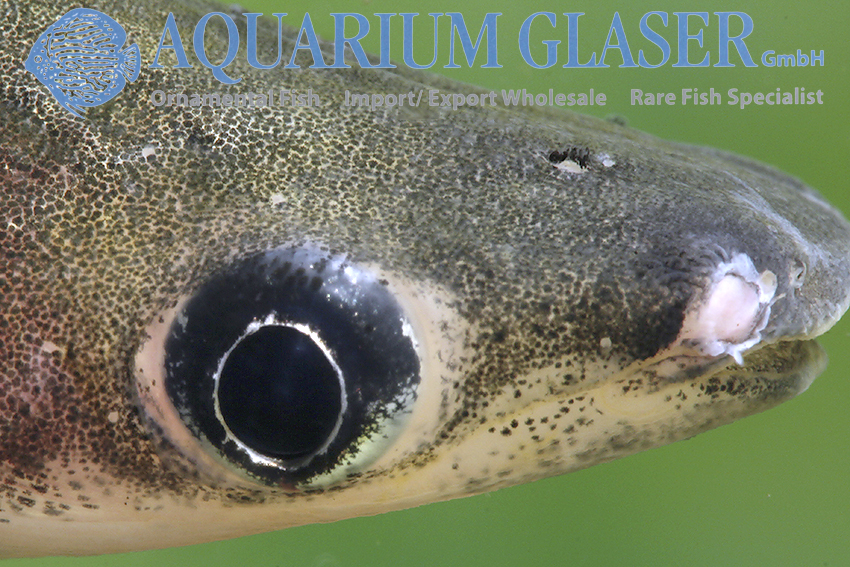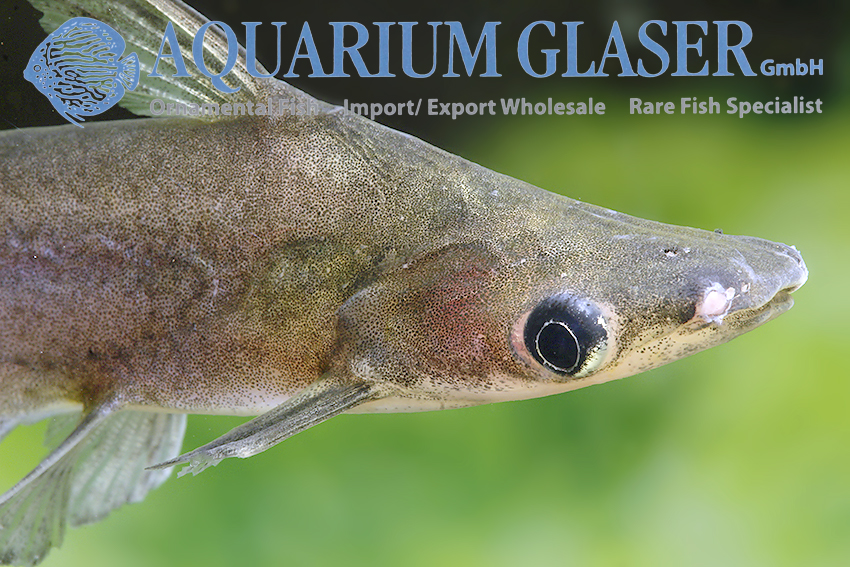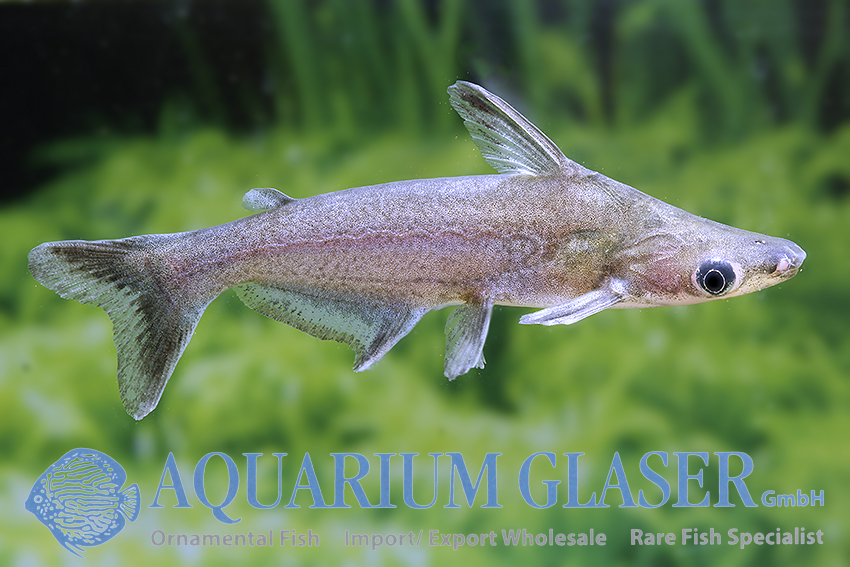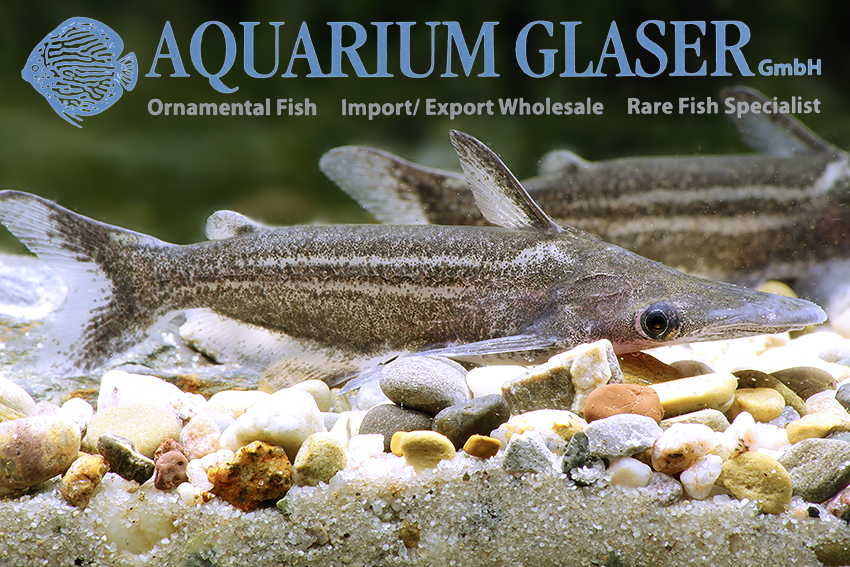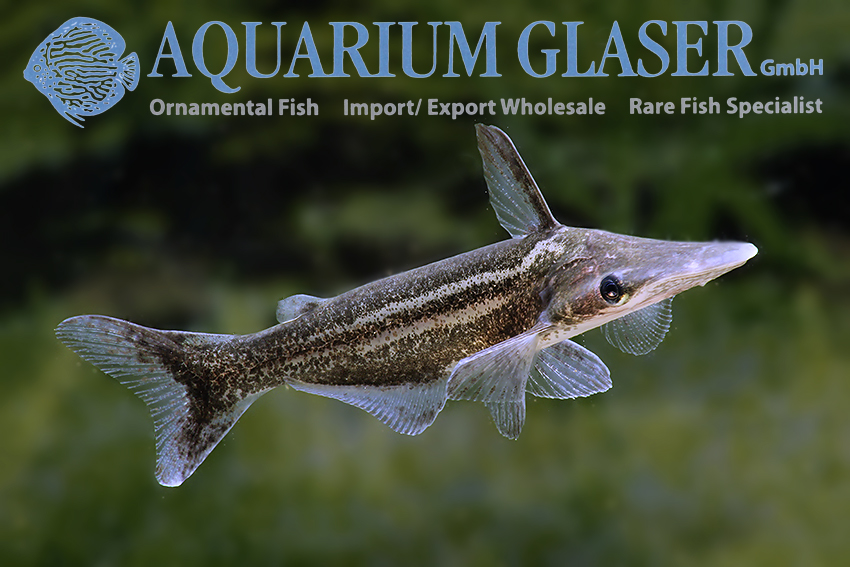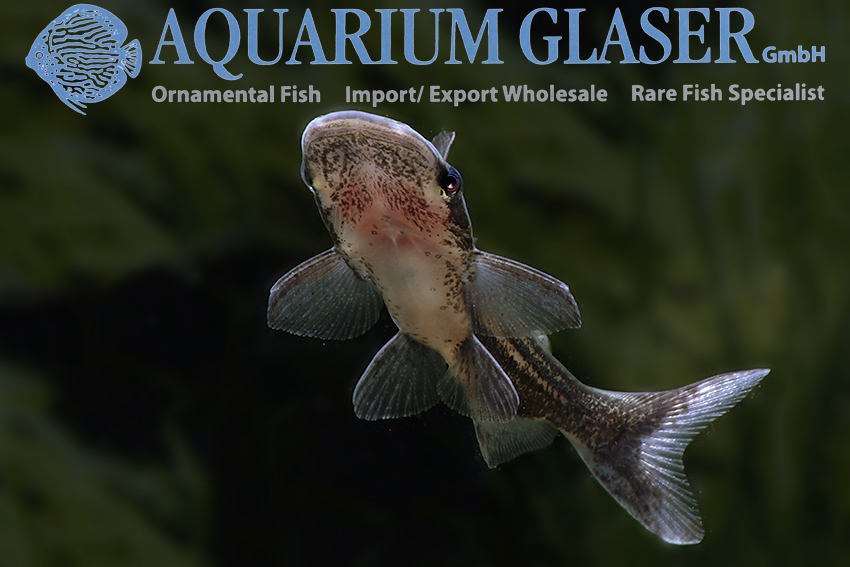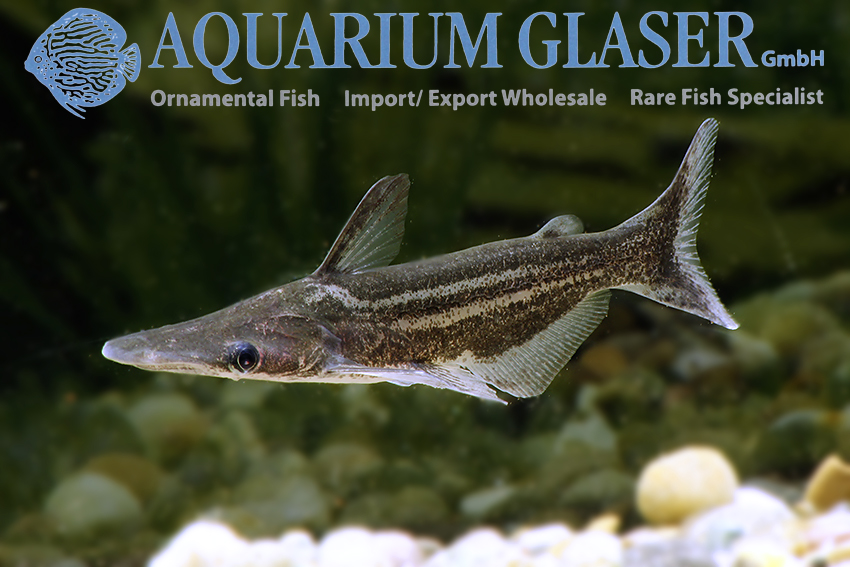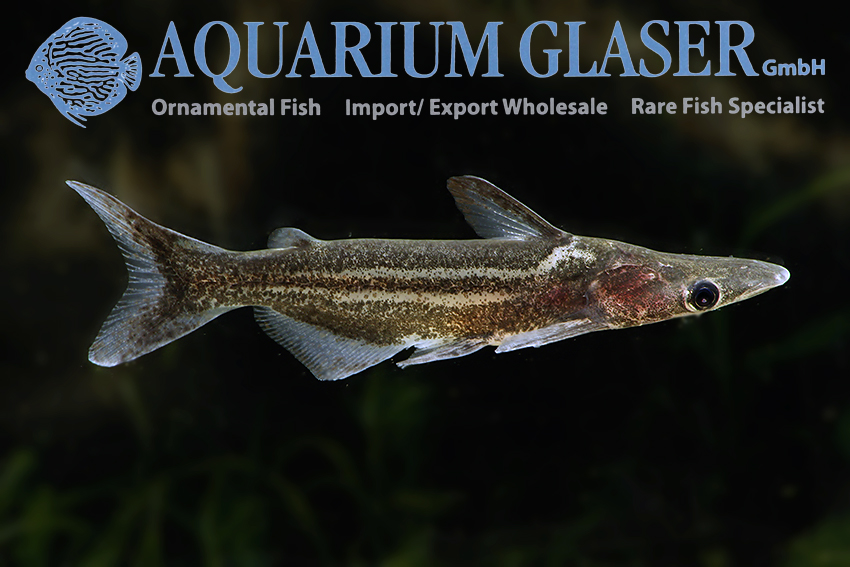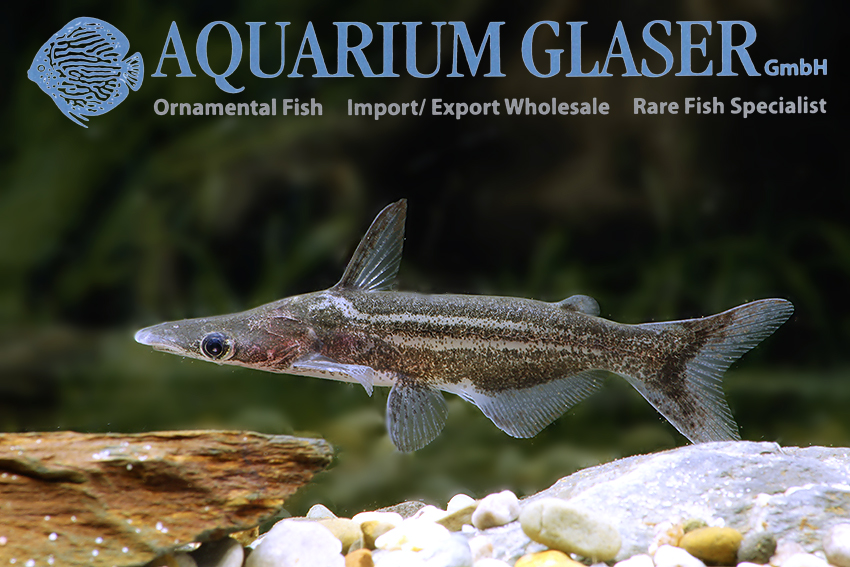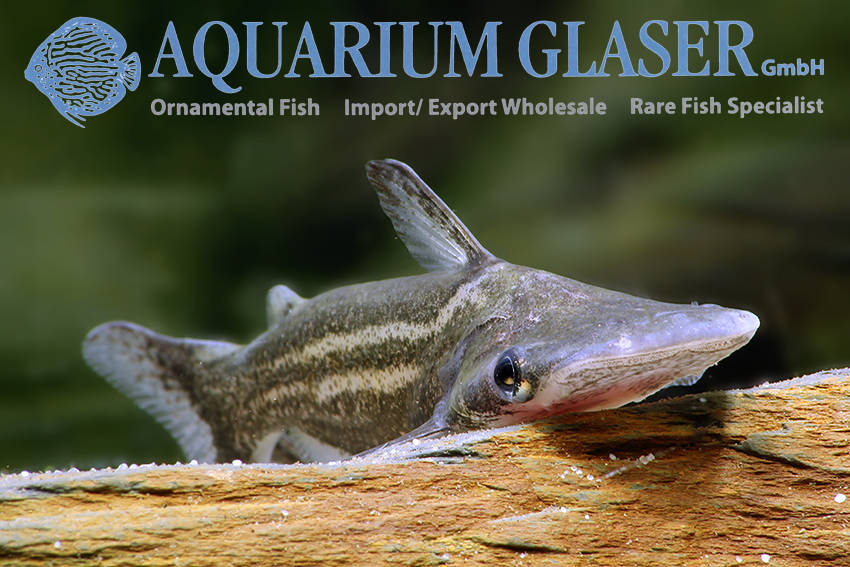For the first time we could (recognized) import this dolphin catfish from Peru. The small species (the biggest scientifically known animal had a standard-length – therefore without tail fin – of barely 8,5 cm) occurs in the area of the upper Amazon, where the river is still called Solimoes.
Tympanopleura cryptica was described scientifically only in 2015; before that the species was probably always confused with other species, hence the species name cryptica, which means “hidden, concealed”. The males of T. cryptica get a strongly extended back-fin during the reproductive-time – like all dolphin-catfish – that serves during the mating to press the female against the side of the male. The inner fertilization takes place on that occasion with a mating-organ, that is formed from the first five rays of the anal fin. One can recognize the males by it also outside the reproductive-period while the long back-fin-spine is shed. One can compare this quite well with the antlers of the stags, that is formed also again annually. The photographed animal is a male, clearly recognizable at the mating organ.
Interesting are the very large nose pores, which at first made us think that the animals had bumped somewhere. But since this phenomenon occurs in many specimens and always on both sides, and can also be seen in the preserved type specimens, we think it is normal.
In our facility these catfish are strictly nocturnal and move during the day only when food is given, as it is known from other driftwooid catfishes (e.g. Duringlanis (former Tatia) perugiae). Concerning the feeding it is to be said that one should be careful with Tympanopleura, what concerns the tankmates. Tympanopleura are predatory fish that can eat surprisingly large fish. However, the catfish also accept all usual frozen food.
For our customers: the animals have code 203033 on our stocklist. Please note that we only supply the wholesale trade.
Text & photos: Frank Schäfer





